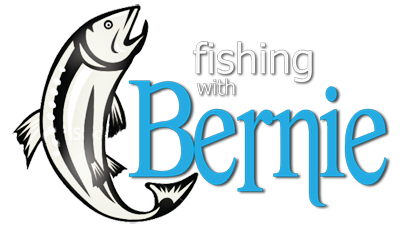With cool water temperatures giving them free reign to roam, lakers, rainbows and brown trout could be virtually anywhere in the lake during the springtime.
More often than not, however, a few key areas hold the majority of the fish. Check out these five surefire hotspots from veteran trout guide Bernie Keefe to make this your best spring yet.
Main-Lake Points
Points attract forage and baitfish, making these shoreline sweet spots magnets for trout. "Long, slow-tapering points where the tip quickly drops from 10 or 20 feet of water into 30 feet or more are the best, but any gradual point with deep water at the end has potential," says Keefe, who uses a lake map to locate prime points but says you can sometimes judge them from shore.
Bottom composition isn't critical, he notes. "It doesn't matter whether it's mud, gravel or boulders," he says. "Depth is most important, and that it's a prominent point."
Light conditions are likewise key. "Sunny skies and calm seas won't cut it," Keefe cautions. "This is totally a low-light, heavy overcast or windy-weather pattern. Such conditions cause trout to move surprisingly shallow. Even trophy lake trout will cruise into a few feet of water to grab an easy meal."
The top of the point is where the action's at. Keefe casts a midsize minnowbait like a Berkley Cutter 110 into the strike zone and fishes it with an erratic retrieve.
"A combination of twitches, pauses and pulls usually trips their trigger," he says. "Experiment to determine the right cadence. But in general, keep it slow if the water temperature is less than 40 degrees, and speed things up once it's over 50."
Cove Mouths
As the sun rises on a clear day, trout slide out of the shallows. Keefe turns his attention to deeper hangouts, like 15- to 30-foot depths in front of small bays and coves.
"Bottom content isn't important here, either, except that trout tend to scatter on mud bottoms, and in really rocky areas they look for flat gravel patches to lay on," he says. "They're like us in that regard, because most people would rather have a soft mattress than a bed of nails."
Trout may be in resting mode, but they still bite. Keefe casts swimbaits like a Berkley Jerk Shad or Power Minnow rigged on a 1/8- to ¼-ounce jighead. "Cast out, let the jig fall to bottom, then experiment with different retrieves until you get bit," he says. "Dragging, hopping and swimming all have their moments, and the fish will let you know the best approach for the conditions at hand."
While casting, he keeps an eye on his Lowrance sonar. "If I mark a fish, it will often bite if I can get a jig down to it in a hurry," he says.
Inlets
Incoming tributaries are fonts of life in the spring. "Trout and baitfish move into them to spawn," says Keefe. "Other trout move in to feed on the eggs, and large trout like trophy lakers come in to eat other fish. You basically have the whole food chain in there."
When targeting eater-size rainbows, Keefe rigs a worm or artificial Power Bait on a small jig or split-shot rig and drifts it through the shallows with the current, either in the creek or where the inflow enters the lake. "If you want suckers, try anchoring a worm in place with a heavier sinker," he suggests. "Suckers won't chase a drifting bait."
For larger trout, he backs out into the lake and casts deeper water. Minnowbaits get the nod in low light, while jigs rule under sunnier skies. "When they're not raiding the inlet, big fish stage in depths of 10 to 25 feet, often in groups, where their competitive nature makes them easier to catch than loners cruising solo," he explains. "Don't be afraid to look around, because I've found them up to a quarter mile from the inlet."
Dam Corners
When fishing a man-made impoundment, Keefe compulsively checks the outside edges of the dam. "You either have concrete butting up to gravel, or large boulders meeting sand and gravel," he says. "Both types of transitions attract everything from spawning rainbows to hungry lakers." Keefe casts the same minnowbaits and jigs around these dam corners, in depths out to 20 feet.
Flats
Flat-bottomed areas rich in baitfish and other forage such as crayfish can also be gold mines right now. Keefe's favorite flats are relatively small areas such as a living room-sized flat lying on a steep-dropping point.
"These are high-percentage areas, ideal for run-and-gun tactics where you line up a milk run of five or 10 small flats and bounce from one to the next, making 10 to 15
casts on each one before moving on."
Small, subtle flats can be hard to spot on traditional lake maps. "Detailed mapping programs like Lowrance's Insight Genesis, which has 1-foot contours, make it easier to find fish-holding flats other anglers miss," he says.
By keying on these overlooked fish factories and the other hotspots on Keefe's early season hit list, you can make this your best spring ever, catching trout when other anglers can't.
















